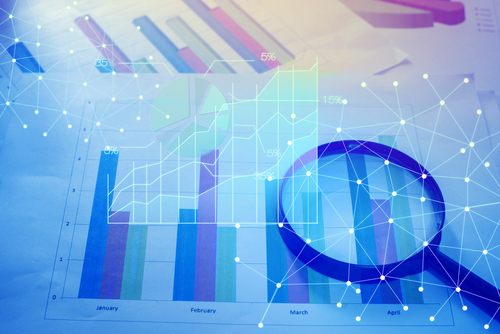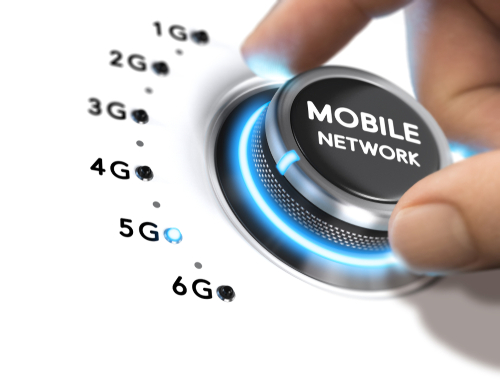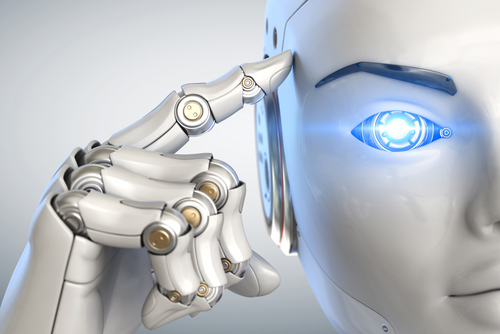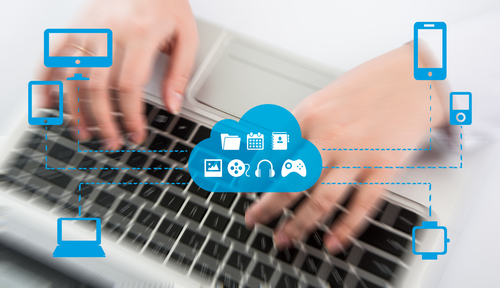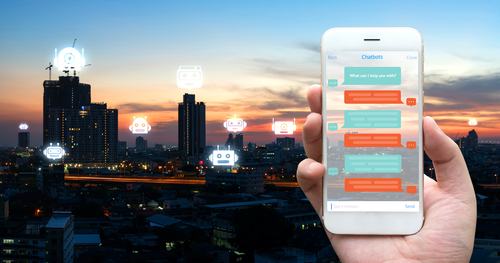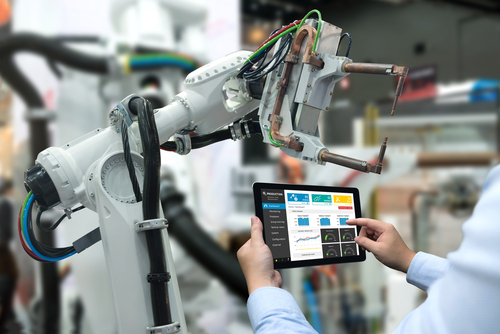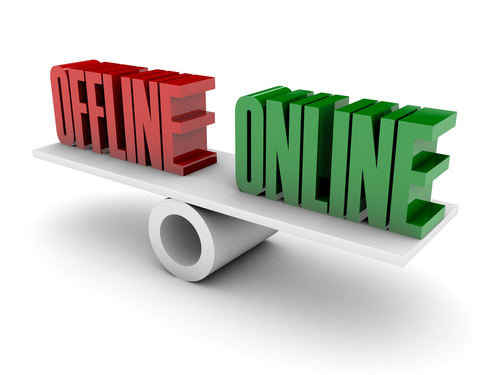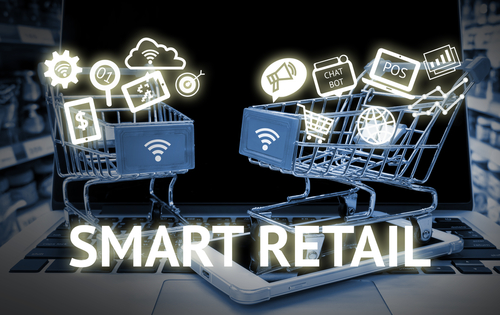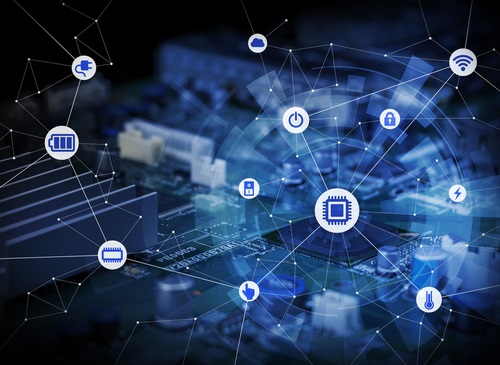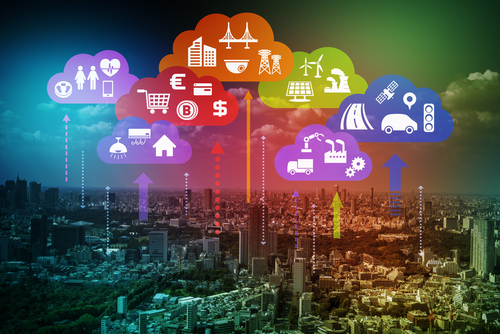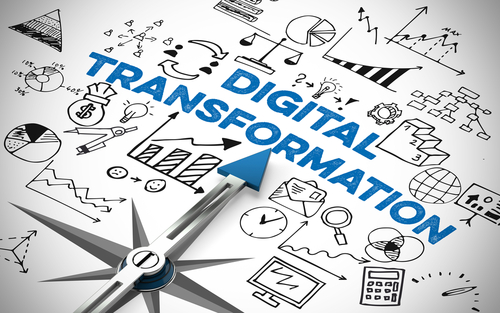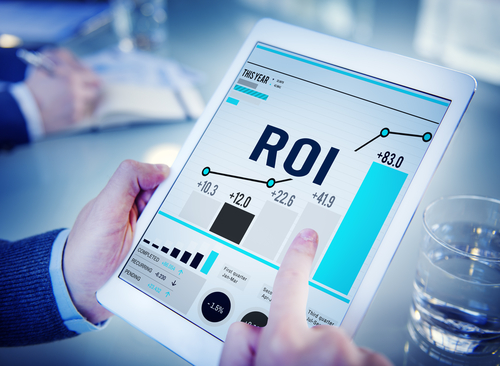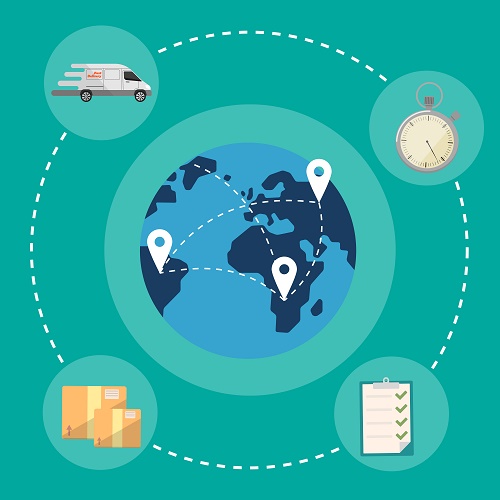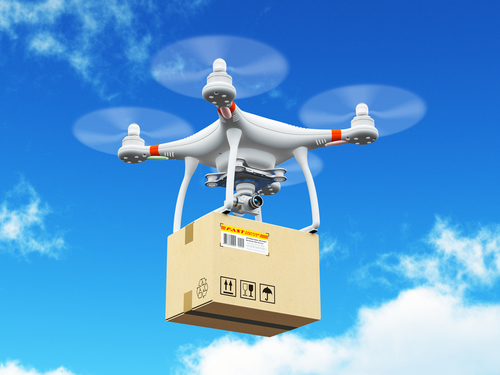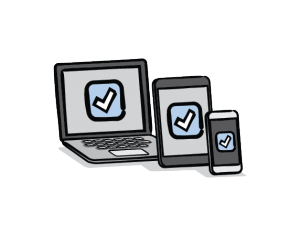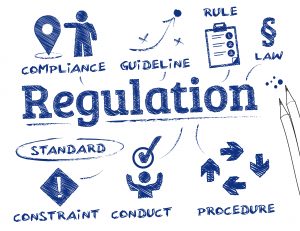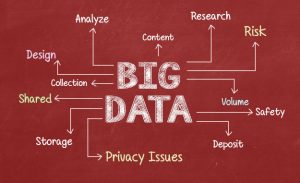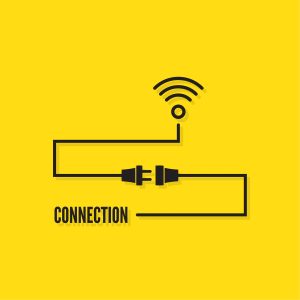Tag: Internet of Things
The year 2017 has been eventful for digital transformation, with technologies such as Big Data coming of age. Digital transformation promises to be more disruptive in the coming years, as evident from the following predictions.
1. IoT Becoming Mainstream
The much-hyped IoT will walk its talk fully in the future. About 8.4 million “things” are already part of the IoT ecosystem, a 30% increase from last year’s levels. Enterprises will start using IoT to deliver better products, services, and insights. IoT will permeate to the masses, and become mainstream and commonplace.
Among specific sectors, IoT will revolutionize analytics in a big way, driving new smart solutions. A few possibilities include hyper-efficient fleet operations, intelligent traffic signals, and more. Tech giants such as Microsoft, IBM, SAS, and SAP are all heavily investing in IoT Analytics, offering a portent of the things to come.
2. Edge Computing Offers Effective Real-Time Processing Solution
The cloud and Big Data analytics analyze tons of data seamlessly. However, the sheer volume and velocity of data create time lag and some inefficiency. For instance, the cloud, for all its advantages, is not viable for IoT powered smart drones, autonomous vehicles, and other AI-powered smart devices. These devices need real-time and instantaneous data processing. Sending data from these devices “all the way” to the cloud is an inefficient and impractical method of processing data.
Edge computing, which performs data processing at the edge of the network, near the source of the data, promises effective solutions to the shortcomings or limitations of the cloud and big data. Edge computing, for instance, allows IoT powered devices to connect and communicate instantly and seamlessly.
Industry biggies, such as HPE and CISCO have already rolled out hardware and software to actualize Edge computing. IDC predicts 40% of all computing to happen at the edge in the next couple of years.
3. Enter the 5G Network
4G or fourth-generation wireless, synonymous with LTE (Long Term Evolution) technology, went mainstream in 2017. 5G of fifth-generation wireless will go gain ground in coming years. The need for hyper-connectivity and IoT propels the need for 5G.
The Next Generation Mobile Networks (NGMN) Alliance defines 5G as “an end-to-end ecosystem to enable a fully mobile and connected society.” 5G is not an incremental upgrade over 4G or LTE.
While the 4G focus is on raw bandwidth, 5G focuses on pervasive connectivity and super-dense network, enabling even faster and resilient access to the Internet even from the remotest caves or desolate hills. Unlike the hitherto monolith networks entities such as 2G, 3G or 4G, 5G co-opts a combination of technologies, including 2G, 3G, LTE/4G, LTE-A, Wi-Fi, and more. While emerging technologies and solutions, such as IoT, connected wearables, augmented reality and immersive gaming places a great strain on incumbent networks, 5G will run these technologies seamlessly.
Industry majors such as Sony and Samsung are investing in Gigabit LTE, the stepping stone between the incumbent LTE and 5G. The already well-entrenched Qualcomm Snapdragon technology powers Gigabit LTE. However, 5G will become a household technology only after a few years.
4. Blockchain finds Its Way
Blockchain, the secure transaction ledger system distributed across a network of computers, rather than under any single entity, will finally become mainstream by 2018. The financial industry has already started to embrace blockchain in a big way. The healthcare, entertainment, and hospitality sectors are on the verge of embracing it in a big way. Dubai is rapidly moving toward becoming the world’s first-ever blockchain-powered government by 2020.
5. Artificial Intelligence Becomes Mainstream
The market size for AI is set to double up from $2420 million in 2017 to $4066 million by 2018.
Solutions powered by Artificial Intelligence are already popular. Artificial Intelligence already powers many popular solutions, such as Alexa, Siri, Salesforce Einstein CRM, IBM Watson, SAP Leonardo, Netflix, Amazon AI, Cortana Intelligence Suite, and various customer service chatbots.
Companies will continue to roll out cutting-edge solutions based on Artificial Intelligence, especially to implement smarter and cheaper automation. The scope of artificial intelligence would expand to encompass everything from emails and content generation and from industrial manufacturing to smart grids. In fact, major companies will embed Artificial Intelligence into their core operations. Fueling the growth of Artificial Intelligence is the spread of open-source solutions. Artificial Intelligence cannot easily be integrated into closed systems.
With more investments being made betting on Artificial Intelligence, Virtual Reality is losing the race significantly because Artificial Intelligence offers whatever Virtual Reality offers, in a much cheaper and better way. For instance, companies can apply 3-D visualization to train, pitch, and envision new products in a much better way than what Virtual Reality offers.
6. Anything as a Service
XaaS or “Anything as a Service” is now within the realms of possibility. The cloud-based services market now encompasses software, infrastructure, and everything else. The latest to enter the “as a service” market is a framework! Framework-as-a-Service (FaaS), which falls between SaaS and PaaS is a customizable cloud-based platform. Users may indulge in rapid prototyping, visualization, and other fast fail methods to discover whether a concept or strategy will work or not. Companies get to know the result of their initiative, without having to spend time and effort, doing it the hard way.
Side-by-side with FaaS, workplace-as-a-service (WaaS) and unified-communications-as-a-service (UaaS) will also become mainstream in the future. Remote workplaces, powered by WaaS, will rise in a big way in the future.
7. Low Code Platforms to Soar in Popularity
Low code development platforms (LCDP) will net a total revenue of $6.1 billion by 2018, and over $10 billion by 2019. These figures are impressive when compared with the total revenue in 2015 which was just $1.7 billion.
LCDPs allow creating apps through a configuration of functions, and intuitive drag-and-drop options, rather than by hand coding. The obvious advantage is ease of development and accelerated delivery of business applications. Acute shortage of talented programmers fuels the growth of LCDPs.
Some popular LCDPs, as of now, are Appian, Mendix, Google App maker, and Zoho Creator. The growing popularity of such low-code development platforms will spur ‘citizen development’.
Technology is always fluid. Companies who embrace the latest technology head-on to deliver better solutions for its customers stand to reap dividends. Companies who do not change will surely be swept away into obsolescence.
Stay up to date on what's new

Featured Blogs
Stay up to date on
what's new



Talk To Our Experts
The past decade has been a game-changer for the way businesses operate in the realm of retail. The advent of e-commerce and its subsequent boom has compelled brick and mortar outlets to undertake a paradigm shift from a profits-first to a consumer-centric approach. Failure in conforming to new consumer demands fueled the retail apocalypse that toppled the brick and mortar landscape. Thus, we see retail giants like Bon-Ton Stores Inc., Sears and Macy’s filing for bankruptcy and liquidate their holdings.
Implementation of targeted mobile promotions, loyalty benefits, e-payment gateways is just some of the strategies adopted by retail outlets to maintain a competitive advantage in the face of fierce technological overhauls. With disruptive innovation gaining a strong footing now more than ever, the need to constantly reinvent and augment is more pressing than before. Here are five key disruptive technology trends that you need to sync your business model with, to offer consumers retail experience par excellence:
Related Reading: 5 Ways to Enrich Customer Experience at Your Retail Store
1. The advent of Artificial Intelligence
Robots and AI bots capable of not just learning but also executing real smartness are the new focus in tech innovations. Retail giants are already experimenting with ways to implement these AI bots in their business operations. A strong case in point would be Amazon’s no-checkout cashier-less convenience stores, Amazon Go being tested across different states in North America.
Then there are self-driving grocery stores and automated trucks making home deliveries that are still undergoing trials. Of course, that is not to say that AI dominating retail operations will become the new normal tomorrow, but it is in the offing. Businesses that are in the retail sector for the long haul will stand to gain from their preparedness to embrace this change.
2. The Internet of Things
The ability of devices to interact with humans, understand commands and execute them is passé. The Internet of Things (IoT) puts the limelight on the ability of machines to interact with one another. The slow but consistent development of IoT is shaping up a new ecosystem where our gadgets will be able to operate without human intervention. Besides, the global market size for IoT in retail is expected to grow around 94.44 billion by 2025.
The emergence of IoT will inevitably alter the dynamics of the way consumers interact with retail business and the way businesses interact with distribution networks and supply chain partners. More importantly, it will usher in a connected customer model by relying on smart-store applications like smart shelves, beacons, and customer service robots. Making room for these swift connections powered by the internet will help you build a business model that is future ready.
3. Striking the Online-Offline Balance
It is the age of digital customers where the lines between online and offline existences are forever blurring. Brick and mortar businesses need an online extension to sustain themselves. Now, the spotlight is on understanding the dynamics of virtual and augmented reality and creating a marketing strategy that caters to the customers’ dual persona – considering their social media image and real identity – to encourage continued interactions and conversions.
The result – a complete overhaul of the shopping experience by bringing in a consistent omnichannel approach built around a convenient digital backend. For instance, Oasis, the UK-based fashion retailer is closing the gap between in-store and online purchasing by merging shopping experiences across its mobile app, website, and brick-and-mortar stores.
4. Personalized Shopping Experience
Take a look at how e-commerce websites function – bringing customers exactly what they need, every time, on every device, without fail. This carefully curated shopping experience eliminates the need for buyers to browse through the inventory of online stores to find what they need. Over time, this approach toward shopping has been normalized to an extent that customers expect the same out of their retail shopping experience too. Installing smart screens, tablets etc. is one way of using technology to recreate the same sense of personalization in your retail business.
5. Banking on Data
Big data is the next big thing in terms of business operations. Multinational corporations are pumping in billions of dollars to assimilate and organize this seamless information to create the right kind of marketing strategies. While big data may be out of your reach as a standalone business entity, you can create your own pool of data and use it to offer improved retail experiences for your customers.
Fun quizzes, for instances, are a great way to gather insights into your customers’ buying preferences, which can then be used to offer personalized product recommendations. You can take it a step further by tracking these recommendations to know if they are appealing to your customers and tweak them accordingly.
Related Reading: How Big Data and Analytics are Evolving Customer Experience in Retail
[Courtesy : European Bank for Reconstruction and Development]
Meanwhile, other technologies like virtual and augmented reality will continue to grow in popularity and efficiency. As a retailer, the onus of using these disruptive innovations to offer a seamless customer experience falls on you. Pairing with the right technology partner is the first step. Get in touch with our experts today to uplift your retail experience with cutting-edge software solutions.
Stay up to date on what's new

Featured Blogs
Stay up to date on
what's new



Talk To Our Experts
The Internet of Things (IoT) is the next big thing in the world of Internet and has the potential to change life in a big way. Much have been written about how IoT will disrupt enterprises, but enterprises are still clueless as to how exactly they would invest in IoT. The confusion is largely owing to the actual implementation still being limited. IoT is yet to attain critical mass and become a normal phenomenon, like what a smartphone is now. However, it is only a matter of time before it becomes so, and enterprises who have a clear-cut idea of where exactly to invest, and how, can reap the early mover advantage.
The IoT Infrastructure Backbone
IoT essentially entails assigning an IP address to any “thing,” and making it thing a part of a wider ecosystem. Research major, Gartner estimates the number of physical “things” connected to the Internet to exceed 25 million by 2020, a big jump from the approximately five billion “things” connected to the Internet today.
The most obvious IoT investments are sensors, processor chips, and wi-networks, besides supporting equipment such as routers and modems. Hardware firms such as Qualcomm offer IoT chips, and networking companies such as Aruba Network, Ruckus Wireless, and a host of others, offer IoT solutions. However, not all enterprises would need to, or even have the capability to set up custom IoT implementations. They would rather deploy ready-to-go IoT solutions available in the market.
Ready to Consume Products
There is already a huge untapped market for smart devices, from smart cars that navigate automatically to smart lighting that manages energy automatically, and from smart shirts that capture body information to smart thermostats and many other things. Enterprises would obviously need to invest in “things” relevant to their business, or “things” which add value. However, even here the options are not yet clear cut, as IoT ecosystems are still its nascent stage, and yet to mature.
Usually, companies that market smart devices grab the headlines when in actuality such “marketing” companies rely on third-party firms who develop and support the products they sell.
A barometer of which IoT product or project is likely to succeed is the interest shown by investors to the device or project. For example, Google’s Nest Learning Thermostat is widely popular among investors, and backed by Google, is a safe bet for enterprises to control air conditioning and other devices and achieve optimal energy efficiency.
However, it is still early days for IoT products. For instance, Fitbit’s ubiquitous wearable fitness-tracking devices is already a household name, and to the unintended, is synonymous with IoT in the same way Xerox was once to photocopiers. But competitors are snapping at its heels, as evident from Microsoft’s recent launch of its own health-oriented wearable in direct competition with Fitbit.
Other companies, such as GE, are making big investments in innovation for the “industrial internet,” launching a slew of new products that would leverage IoT to enable new possibilities. GE has already pumped $1.5 billion into smart product research since 2012, and the results are starting to bear fruit. Side-by-side, major manufacturers such as Samsung are releasing new “smart” and IoT compatible models of their existing equipment and device ranges. Agri-giant Monsanto has taken over a technology firm that helps farmers better predict the weather, to signify its foray into the IoT space. Devices from such established majors gain the advantage of an established market and client base.
IoT is still an extremely fluid space, and investing in it is a hands-on endeavor. Enterprises need to indulge in a lot of research matching the available solutions to their specific business processes and models.
Early Benchmarks
Several leading companies are already making big investments in IoT, and reaping rich rewards in the form of improved process efficiency, and unlocking new business. Here are some high-profile success stories:
UPS uses sensors to monitor mileage, speed, and engine health of its fleet, thereby bringing in operational efficiency and considerable savings in fuel and associated costs.
Farmers Insurance uses IoT in its core business models, to automate automobile claims resolutions. For instance, the company has deployed a system where a sensor equipped car that gets hit by a shopping trolley in the car park could trigger an automatic notification alert to the car owner, through a smartphone, and file an insurance claim automatically.
Disney World’s Magic Band makes guest management at its resorts seamless. Guests can take fast pass rides, order food, park cars and do more with these bands, in a seamless way, and the company gets greater insights to fine-tune its operations accordingly, creating a win-win situation.
Soon a customer may be able to simply walk into a store, pick up what she like, and leave. IoT sensors would capture all the required information, and collect payment automatically.
Enterprises need to take a close look at their business models to see how IoT will fit in, to improve processes, deliver better services to the customer, and expand the scope of doing business. Investment in IoT needs to focus on this direction.
Invest in the Analytics
Setting up the IoT infrastructure is one thing, and benefiting from it is another thing altogether. Many enterprises investing in IoT make the mistake of focusing their energies on setting up the infrastructure. Success requires giving equal focus on the analytical tools that aggregate data from sensors, integrate it with information already available in the company database, subject the data to analytics, and present the results to the stakeholders, in the form of actionable information.
Several organizations and vendors offer solutions to help enterprises analyze and make sense of the vast amount of data the sensors collect. Since actionable information that benefits depends on the nature of the business, there is scope for considerable customization here. Enterprises would do well to rope in a competent strategic partner who is strong in delivering cutting-edge apps and other software solutions that can leverage IoT.
Stay up to date on what's new

Featured Blogs
Stay up to date on
what's new



Talk To Our Experts
An overview of the efficiency and ROI Opportunities that the Industrial Internet of Things Unlocks
Computing technology has been evolving steadily over the years, from mainframe to minicomputers, to PC-based software, and then to internet websites and now mobility apps. Each major push has a disruptive impact on the ecosystem. The Internet of Things, manifesting in the convergence of the physical with the digital, is the next big thing and all set to shake up the world like never before. It is all set to usher in a new Industrial age. Between now and 2020, when IoT is expected to become well-entrenched, conservative estimates pegs the spend on IoT solutions at $6 trillion, and more than 34 billion connected devices.
The recent CBInsights Conference sheds light on the range of possibilities that IoT offers. The possibilities are endless, ranging from the already popular health bands to self-driven cars, from AI-powered tools replacing manual error prone judgment of investment managers, unlocking new revenue models, to predictive models speeding up processes and improving accuracy, and much more.
The key driver of IoT is digitalization, which blurs the line between technology and the physical world of machinery and other “things,” and integrates value chains on an end-to-end basis. IoT in a sense represents a convergence of the physical and the digital. The success of IoT depends on the ability to collect data from the real, physical world, and analyze it digitally in a timely way, to create new models that propel efficiency and unleash better solutions. While IoT is set to disrupt all walks of life, a key impact in business is on the industrial front.
Industrial Internet of Things (IIoT), broken down to its bare bones, is harnessing all data around the end-to-end value chain of enterprises. GE estimates the Industrial Internet of Things market to touch $225 billion by 2020, and the total investment in IIoT to touch a whopping $60 trillion by 2030.
IIoT brings about a change in approach in how companies approach and conceive their assets. From a model where the process remained sacrosanct, the “thing” or “asset,” be it an engine, a television, an oil refinery, or anything else, now becomes the focal point on which systems are organized. The under riding focus is to improve the performance of such “things”.
Efficiency Improvements
IoT drives efficiencies in a big way. Data from millions of sensors, subject to real time may be put to use for any number of purpose.
IIoT transforms business processes through smart predictive maintenance, better asset utilization, and dynamic scheduling, delivering higher productivity.
Smart maintenance: At a basic level, IoT sensors and actuators enable predictive analysis to preempt machine failure. Proactive analysis, delivered as actionable insights, ensures prompt repairs and replacement of spares, maximizing the life of assets. Such services would evolve into platform-as-a-service that provides asset productivity and efficiency-enhancing tools.
Improved production quality: The intelligent adoption of data generated from millions of sensors help improve the quality of production. Insights from precision data contribute to sort out glitches, identify and eliminate common trouble spots, and automate routine tasks.
Dynamic scheduling: “Smart” data enables optimal allocation of machinery and other assets, eliminating both idling and over-congestion. This results in a smooth and harmonious workflow, which directly contributes to not just big savings in overheads, but also better quality of output.
New Possibilities
IIoT also enables new businesses, by unlocking potential not possible before. A good example is remote monitoring through “anything-as-a-service” offering. Such IoT-enabled interventions can have a positive disruption in the entire value chain of the business, A good application is in the food industry, where the entire value chain, from farm-to-fork, or from planting the seed to food at the table could be optimized through the effective use of sensors and other IoT things, to bring each process to the ecosystem, aimed at making them more efficient, to improve the quality, to improve the safety and eliminate waste.
Positive ROI
The efficiency and other value IIoT unlocks directly translate to financial gains. IoT-powered linking the physical and digital worlds could generate up to $11.1 trillion a year in economic value by 2025.
Among specific sectors, autonomous vehicles and condition based maintenance offers a potential value of anything between $210 billion and 740 billion. Operation and equipment optimization in factories unlock potential value of $1.2 trillion up to $$3.7 trillion. Operations optimization and health and safety implementation in worksites add another $160 billion to $960 billion. Logistics and navigation have the potential to add $560 billion to $850 billion in value.
IoT users, including businesses, consumers, and other stakeholders may capture up to 90% of the value that IoT applications generate if they get their IoT systems right and deploy the right tools.
Manufactures, and oil and gas majors have already started to see big gains from their IoT implementations, and as IoT gets bigger, the returns to are poised to get bigger and wider in scope.
Challenges
The new industrialization ushered by IoT will force a paradigm shift in the production and distribution of goods, in the manner in which products are serviced, and in several other functions. The elephant in the IoT room is, however, innovation. Unless there is sufficient innovation in developing new business models and in the development of end-user products and services that leverage the IoT technology to actually bring the possibilities to the end-customer, much of the potential disruption would remain on paper.
Side by side with innovation, there needs to be a coherent action to ensure the systems and procedures in place facilitate leveraging IoT. There is a pressing need to encourage interoperability, ensure security, and protect privacy and property rights before IoT realize its full potential. On average, about 40% of all settings in enterprise require interoperability, before IoT can add value.
IoT data remains heavily underutilized as of now. IoT will cause positive disruption only if the available data is leveraged to the hilt, through cutting edge real-time analytics. To put things in perspective, an oil rig with 30,000 sensors, only one percent of the data is examined now, mainly to detect and control anomalies. For IoT to make a paradigm shift, much more data should be leveraged and applied for higher tasks, such as process optimization and prediction as well.
While IoT promises loads of potential, it is early days in the IoT game, making the situation dicey. Your best bet in riding the IoT wave is to partner with a sound developer like us, who not only have the right technical expertise in developing cutting edge and innovative solutions that take advantage of the possibilities IoT unlocks, but also keep abreast with the technology in the first place. We have a wealth of experience developing cutting edge solutions, cutting across industries.
Stay up to date on what's new

Featured Blogs
Stay up to date on
what's new



Talk To Our Experts
Digital technologies have permeated and disrupted almost all sectors, and logistics companies are no exception.
Optimization and efficiency, combined with speed and seizing the moment are the keys to success in today’s highly competitive advantage. Technology is the key enabler allowing companies to realize these aspects.
Leveraging Technology for Strategic Planning
A report by transport and logistics analysts Oliver Wyman reveals transportation and logistics companies increasing revenue, yet having reduced profits, over a 10-year period, and come with the recommendation to “standardize and streamline structures and processes, developing industry oriented and innovative solutions, thinking and acting in terms of networks.” Technology is the key enabler in this regard.
On average, transportation companies invest about 5% of their annual revenues in digital operations, with the main focus on digitizing their customer interface. The thrust these days is especially on mobile apps and solutions, to offer a personalized experience for their customers, and track the movement of vehicles accurately. However, side-by-side companies are also increasingly using digital technology to unlock new business models, focused on the creation of value-added services and innovative solutions.
The Use of Big Data to Improve Operations
The need to cut cost and take real-time action, in a competitive environment where margins are wafer thin, require logistics companies to take greater control over their supply chain and ensure the processes take place seamlessly, at great speed. Towards such ends, logistics companies are increasingly applying Big Data technology, to capture and analyze data, to streamline their operations and optimize the supply chain.
Computers apply algorithms to crunch Big Data, unlocking insights and opportunities not possible before. Such insights enable streamlining operations and optimization of the supply chain.
- Data based automation, especially automated load building and optimizing the inbound and outbound movement of cargo, enable optimal usage of available resources, reduction of waste, and facilitate lean operations.
- Effective real-time fleet management solution facilitates “uberization” of trucks and other delivery vehicles, where empty containers may be utilized immediately by matching it to the nearest load. Mobile solutions enable greater transparency into the operations.
- A comprehensive data based inventory and supply chain management system unlocks silos, and facilitates end-to-end visibility to inventory, orders and shipments across the supply chain. Such transparency allows improved tracking of inventory movement, facilitates the reduction of network-wide inventory levels, and enable managers to respond dynamically and in real-time to any events or issues that disrupt or hinder the supply chain.
- Analytical data makes explicit greenhouse emissions and carbon footprints of truck and machinery operations, allowing companies to take steps to become carbon-neutral, thereby contributing to the cause of “Green logistics.”
- The combination of machine learning with supply chain management enables turning reams of passive data into actionable business intelligence. Logistics companies apply the wealth of data related to the movement of their goods and trucks to identify patterns related to customer trends, identify what works well, unearth market insights, and gain competitive advantage.
Digital Improves Security
Supply chain disruption is the number one global business risk for logistics companies. Technology enables fortifying the supply chain in many ways.
- Digital locks make the inventory more secure, offer a robust layer of security, in addition to physical security.
- Optimal route planning, combined with real-time tracking of cargo movement through mobile apps enable routing of cargo by avoiding congestion points and trouble spots, to minimize risks and interruption.
Internet of Things (IoT) Enhances Operations
The earliest applications of RFID and nascent IoT technology have been in asset tracking and warehouse management. For instance, rather than simply tracking inventory of pallets and crates, enterprises use sensors, beacons, RFID and other technology to gather information on the state of the connected item, such as when the “thing” requires maintenance, the expected life of the “thing,” and more.
IoT contributes to highly integrated warehouse management solutions, enabling precision movement and accurate tracking of movement of goods. The applications of IoT instruments in logistics are virtually endless, ranging from tracking transportation goods in a temperature controlled way to ensuring the correct package reaches the correct location at the specified time and more.
The trends in the immediate future include connected and ‘autonomous’ trucks, warehouse robotics, and smart warehouse solutions, all of which will improve efficiency manifold, speed up operations, and improve accuracy.
Technological Innovations Unlock New Possibilities
Logistics companies use technology not just to improve efficiency of operations, but also transform the way operations take place in itself. The use of robots in large warehouses, and to handle hazardous goods is already widespread, as is the driverless, remote-controlled vehicles.
The next big thing is the use of drones, especially for last mile delivery. The U.S. Government is already piloting a drone-based traffic monitoring system. Countries such as Spain, France, and The Czech Republic and others have several research projects looking into the use of drones for traffic management. The widespread use of drones would speed up things considerably, reduce the hassles, strain and inefficiency associated with maintaining an army of delivery boys, and also reduce costs considerably.
A start has already been made, with Amazon Prime Air already making legit deliveries using drones, in less than 30 minutes from the time customers place an order. When the technology becomes widespread, logistics will change like never before.
Improved Customer Satisfaction
Proactive transportation and logistics companies go beyond improving their operational efficiency and retaining greater control over their operations, to enhance customer satisfaction.
Technology propels a shift to a customer obsessed operating model, enabling the delivery of personalized and customer-focused logistics, with faster cycle times.
Hyper-connectivity facilitates not just big data, but also speed data. Speed and timeliness, manifesting in seizing the moment enable companies to match customer expectations and deliver competitive differentiation over its competitors.
It requires considerable expertise in both business operations and the latest cutting edge technology to roll out successful technological solutions acceptable by the rank and file. By partnering with us, you can piggy-bank on our vast and extensive experience in delivering highly intuitive apps and other solutions for transportation and logistics firms. Our rich talent pool, combined with extensive experience allow us to add value to your strategy, and roll out seamless apps that make your processes highly efficient, allowing you to cut costs, unlock new possibilities, and take customer satisfaction to new levels.
Stay up to date on what's new

Featured Blogs
Stay up to date on
what's new



Talk To Our Experts
Enterprise mobility has come a long way in improving organizational efficiency and helping companies empower their workforce digitally. It has been estimated that by 2020 the global revenue generated by enterprise mobility software market would surpass $140 billion annually. With a compound annual growth rate of 15%, it is also expected to be spearheading nearly 15 to 20 percent of annual IT spending by global organizations. The driving forces behind the growing market for enterprise mobility products are the increased productivity factor for mobile workforce and the availability of low-cost smart devices. 2016 is running to a close and so we decided to have a glance of what’s going to be the state of Enterprise Mobility in 2017.
Let us see the direction in which enterprise mobility will head into in 2017:
Market Focus
As usual, 2017 has a very robust growth outlook in existing markets especially North America, which will be the primary leader globally in terms of enterprise mobility adoption. However there will be a new name on the top of the list for fastest growing markets – Asia Pacific (APAC). With a Compound Annual Growth Rate (CAGR) of 21 percent, APAC markets are expected to be an area of huge focus for enterprise mobility product vendors.
Flexible Device Management
Very recently, Forrester claimed that mobility is of prime importance for 71% of organizations. This means they will promote almost all kinds of mobile devices amongst its workforce. Bring Your Own Device or BYOD as it is affectionately known globally, will create room for newer policies in device management and control. Integrating flexibility into the BYOD ecosystem will be a challenge as good majority of employees would utilize the same device for personal and office use.
Information on the Go
Taking a leaf out of the previous trend, the rapid rise in number of devices will pose another challenge for information access. Enterprise data or information would be scattered across multiple organizational departments, hierarchies, geographical locations, etc. But for the end user or mobile workforce, all they need is information on the go, at their fingertips. Cross channel and intra-organizational data communication policies would face increasing pressure to synchronize information across mediums so that more informed decisions can be taken by end users.
Cloud Synchronization
It is hard to call Cloud a buzzword now not because it is irrelevant but because it is a norm for the entire tech world. From music to high end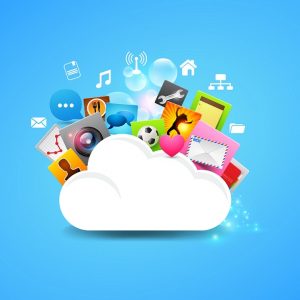
Security
Perhaps for the last few years, when people speak about trends in tech, especially when it involved data communication across channels, security had been the number one point on the list. Today we pick security to occupy a lower position, not because it has become a guaranteed surety, but because of the huge improvements that have been witnessed in the world of data security. Thanks to cloud computing, it is easier for enterprises to have a focused area to spend on information security. Whether companies opt for established cloud service providers like, Amazon Web Services or Microsoft Azure, or whether they build their own private cloud infrastructure is not a relevant question in today’s cloud security context. Cyber-attacks are increasingly being reported globally and hence it is imperative for organizations to lay strict emphasis on security policies. The most challenging security scenario in the case of enterprise mobility would be the unmonitored usage of device on insecure public networks. Security applications would definitely find huge market scope in the coming years.
Internet of Things (IoT)
IoT today is what cloud computing was 5 years ago – the rising area of focus for businesses. The ability of devices, or more specifically sensors, to communicate user dat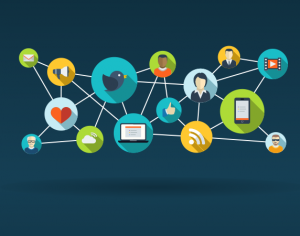
Dedicated Mobile App Development Centers of Excellence
This is a culmination of all the above trends. With such a huge emphasis being directed towards enterprise mobility, organizations would require dedicated developer teams to build customizable solutions for enterprise mobility. These developers would be groomed as an agile workforce to support the massive amount of organizational activities being migrated to enterprise apps.
So there you have it folks, 7 trends we feel will shape the future of enterprise mobility in 2017 and beyond. Enterprise mobility is here to stay and is definitely moving in the direction of becoming a hotbed for tech innovations in the near future.
Stay up to date on what's new

Featured Blogs
Stay up to date on
what's new



Talk To Our Experts
After several years of living with the Internet of Things (IoT), ubiquity of software, and the BYOD (Bring Your Own Device) phenomenon, which has almost become mainstream now, we have a relatively new phenomenon coming up. The “Consumerization of IT”.
While BYOD, BYOPC and the like, are all elements of consumerization, it is actually much more than all that. It is a broader concept, that makes the end users do pretty much whatever they want, with the IT being powerless to a large extent in order of stopping or controlling them. In many cases, the IT doesn’t even know that they have people doing this.
So what exactly is consumerization of IT?
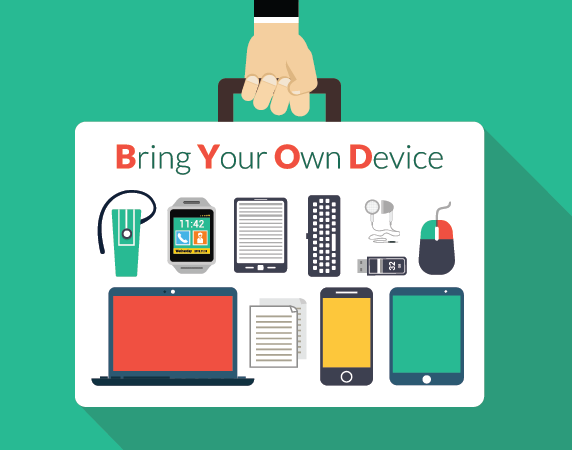
It is completely driven by the employees themselves, as they buy their own devices, use their own online service accounts, download and install their own applications and often use their workplace network connection as well.
Why is it important for marketers?
“Over the next 30 minutes, over 700,00 apps are likely to be downloaded from the app store, up to 21,000 Twitter accounts are likely to be created and Facebook users will have spent around 146 man-days on it”
Consumer behaviour has undergone drastic changes over the past few years, ever since the advent of the mobile era. Their engagement through social media has increased more than ever. According to findings, over the next 30 minutes, over 700,00 apps are likely to be downloaded from the app store, up to 21,000 Twitter accounts are likely to be created and Facebook users will have spent around 146 man-days on it.
These figures only show how fast human interaction across networks is, and how consumers are almost always ahead in things, including technology, before businesses follow.
That way, consumer behaviour can be considered to be one of the major indicators of what might happen in the business world. Since they are always accustomed to new ways of thinking, they start expecting the same level of convenience from businesses as well.
For example, Amazon.com delivers, what can be called a superior shopping experience to its customers. They even have other third party affiliates paying them to make use of this experience. This makes it one of the best B2C companies. Even in the B2B segment, they have the Elastic Cloud Computing (EC2) Solution, which makes them one of the most preferred providers of cloud-based infrastructures in businesses as well.
With these two areas already mastered by Amazon, they could very well consider creating a rating system, just like the one in their consumer site, for B2B products and services as well. Put together with B2B related social media channels, it could become a powerful peer recommendation platform.
This kind of a spillover of consumer shopping, buying as well as using experiences, on business experiences is something that is going to affect product marketers and sales and marketing product management as a whole. In order to get ready for this “consumerization”, marketers might need to create specific and personal plans to analyze things and adapt, while at the same time implementing strategic plans for their entire company as well.
How can marketers adapt
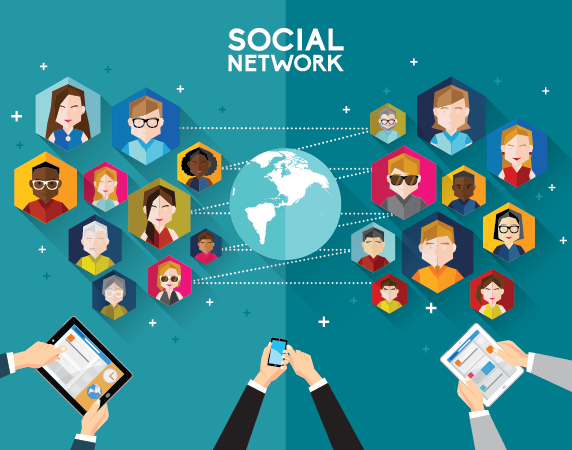
Short, dynamic and engaging content is what businesses need to adapt to the consumerization effect basically. When such effective content gets delivered in different formats across various channels and to the right people, it reflects in the number and quality of your leads.
This way marketers and business officials can thus make use of the consumerization effect, and turn it to their advantage by taking the necessary steps.
As consumerization is something that is increasingly becoming popular, businesses do need to adapt to the phenomenon. Hence, the earlier the better. Analyze the significance of consumerization, its effect on your organization and start making the necessary changes right away.
Stay up to date on what's new

Featured Blogs
Stay up to date on
what's new



Talk To Our Experts
The day when you’ll see the everyday things- from phones, cars and doors, to lights, refrigerators and washing machines, connected to the internet is not very far. In fact there are over 13.4 billion connected devices already and it is expected that the number of internet-connected devices will reach 50 billion by 2020.
In spite of becoming an integral part of personal lives, the IoT will also bring major paradigm shifts at every phase of businesses. Many companies have already started adopting IoT and to plan their business around it. There are only two options- either get ready to embrace this revolution and stay on top, or face the consequences.
The manufacturing business will have to bring major changes to be in the game, around software, data and connectivity mainly. According to Gartner’s 2015 overview of manufacturing industries, business intelligence and performance management are the top priorities of manufacturing sector and both these areas are heavily dependent on software and data gathering. Hence, Manufacturing is in the top list of industries looking to hire data and software experts.
The software everywhere helps make all devices programmable and narrows the gap between digital and physical. While software everywhere redefines the manufacturing industry, it also redefines the scope for audits, inspections and compliance because it brings with it new challenges. Let us see some of the challenges the Internet of Things will pose to audit, inspection or compliance sector in detail.
Challenges for auditors dealing with software everywhere
Auditing is not a walk in the park when it comes to organizations adopting new technologies and automating tasks with software everywhere. While the Internet of Things brings many rewards, it also poses serious risks, which if not carefully dealt with, can lead to organizational disasters.
Technologies move very fast and manufacturers are under pressure to keep pace. Each passing day there arise new laws to which the businesses, organizations, industries and agencies should conform. Most often, there might be less thought devoted to the risks associated with certain deployments of technologies in businesses, and the manufacturer, law bodies and compliance bodies may not be aware of all the risks. The IT departments are generally the ones bearing the brunt of the storm, with a variety of auditing issues, which if not managed properly can spoil the compliance and security of even the most ambitious organizations. One of the biggest challenges for them is to make sure that all the technology and software deployed adhere to multiple compliance standards. The internal auditors should stay abreast of the new IoT developments to foresee these risks and controls in their business.
While software everywhere will ensure quick, flexible, easy and smart business processes, such flexibility can also be a loophole to circumvent compliance requirements. For instance, a machine or a device can be programmed to identify that it is being inspected or audited, the software can recognize the test pattern and it can then generate results, which appear to be compliant to the audit. One way to overcome this problem is to adapt smart auditing strategies like those used by quality assurance professionals, who constantly deal with such issues. For instance, auditors could use heuristic based techniques, where audit design and execution are combined and the auditor explores the system to identify non-conformance to high-level heuristics.
Another key aspect to consider in the area of software, is regarding ownership. The Digital Millennium Copyright Act (DMCA) makes it unlawful for independent auditors to look at the code that runs on a machine, thus making it easier to conceal intentional wrongdoings. Unfortunately, this law can punish users and auditors who try to understand whether their software or system are compliant, or can be manipulated in a manner that it will endanger the consumers of the product manufactured by these systems. Another important challenge for audit regulators is the need for effective reporting to their stakeholders regarding audit performance, and the efficient conduct of audit inspections, which requires coordination among varied regulators and compliance with differing laws and regulations.
However, the good news is that, changes shall happen over the year 2016 that will make it possible for such business to conduct audits much efficiently, to check if they are compliant to legal norms like FDA or EPA norms and other good manufacturing practices.
Challenges for auditors dealing with large amounts of data
Increased use of computerized systems, smart manufacturing and decreased storage costs have led to generation of large amounts of data that are aggregated, coded and classified to enable good decision making. Auditors can derive value from this data and ensure that decisions made are based on solid, quality information that is trustworthy and relevant. This big data enables root cause analysis in cases where noncompliance or failure is detected, and can be used to provide a near complete picture of the system state at the point of failure. The availability of such valuable data can enable quicker corrective actions. Non-compliance issues detected years after the production can be safely traced back with retrospective auditions.
However, the unstructured nature of big data poses big challenge for the auditors. There need to be a good standard of managing the generation, classification and storage of data, for it to prove useful in auditing or inspecting activities. Data processing standards today do not cover the governance processes for management, storage and expiration of data. However, changes are expected in 2016 that will address the present state of big data with respect to the audit environments.
Challenges for auditors dealing with storage and ownership of data
Image courtesy: Cloud Lounge
In production environments, the data produced by the equipment and system used in production line are mostly stored in clouds. In the cloud, these data may be stored on storage devices that may not even be owned by the manufacturers who generate data, but will be owned by third party service providers, like analytic provider or storage service provider (like amazon). In such cases, it is not the manufacturer but the third party, who gets the ownership of these data. In fact, data may not be even stored in the same country. Such a 3rd party doctrine complicates the issue when confidential transitional data is stored by cloud server providers and this raises more issues like confidentiality and contract, availability of data for audits, and liability issues.
Challenges for auditors dealing with Connectivity
The Internet of Things (IoT) as we have all heard of has been around for quite a while and this year we saw a large number of connected devices flood the market. This is only going to increase and by 2020, we are expected to have over 50 billion connected devices. The Internet of Things is not just connected cars, cameras, and doors. IoT also extends to heavy machinery, to jet engines, oil drills and to connected devices and equipment in manufacturing and production, as well. As smart manufacturing gains momentum, more and more machines on the production lines are connected and online. Machines are connected to each other to exchange data, and to servers in the cloud to enable machine learning, monitoring, forecasting preventive maintenance, etc. This ensures cycle time reductions for corrective and preventive actions post audits. Remote monitoring and diagnostics can ensure that the product complies with the legal requirements. Connectivity can help conduct remote inspections eliminating the need for people to travel to the locations to get the audits done.
While connectivity brings the above advantages, it brings with it, its share of challenges as well. Poor security, for example on connected equipments can make systems vulnerable to hacking and systems can be compromised without the hackers having direct access to the systems. As a matter of fact, vulnerabilities in any connected device can compromise an entire system. The security of connected equipment will soon be an area of compliance for audits and inspections across industry segments. With time, it can even enable production to happen at the supplier’s end or the consumer’s end, rather than at the factory, which can further increase the risks for auditors and inspectors. They will have to take into consideration the entire chain of equipment that communicate with each other, and modify their audit strategies accordingly.
Everyone, who are in the business of audit and compliance are impacted by the IoT and by the fact that all the equipment we use are connected online, is programmable and is generating enormous amount of data. The auditors, inspectors and all of us in the audit and compliance field need to learn about the new skills and competencies pertaining to the software deployment, vulnerability detection and software compliance. The good news is that there are established practices in the software QA (quality assurance) industry, which can provide good reference points for those who wants to upgrade their skills. However, the hardest part is to change the mindset and culture among auditors and inspectors to adapt to this new paradigm of Software Everywhere. We need to move faster to adopt practices, processes, and new mindset and to learn new skills that will enable us to do a better job in auditing, compliance and inspections for devices that are connected, generate lots of data and are managed by software!
View this webinar on the ubiquity of software in the compliance industry, by Deepu Prakash, Head of Process and Technology Innovation at Fingent Corp:
Stay up to date on what's new

Featured Blogs
Stay up to date on
what's new



Talk To Our Experts
“You have an app for that”. – How many times have you used or heard this statement lately? Probably a Gazillion times, right. Undoubtedly, it is because of the huge surge in the use of mobile applications and devices for anything and everything in this world. For almost everything you do, you invariably have an application for that. The number of services that are available with an app in your mobile phone has gone beyond imagination levels. While this is good news for the app users, it puts the developers in a tad bit of pressure in creating applications that surpass existing ones. Here we look at some of the latest trends in the area of mobile app development that have been doing the rounds this year and have contributed a great deal in making beautiful apps:
- Rapid Mobile development – As the demand for mobile applications increased rapidly, businesses have been racing ahead in the run for delivering them to customers. This put the app developers on a constant lookout for ways to shorten their app development lifecycles and deliver apps much faster. Now, there are various tools available in the market for rapid app development and we can expect to see many more in the near future. The basic idea is to reduce the time gap between the birth of a concept and delivery of the product. These tools have also proved to be quite effective as well.
- Internet of Things (IoT) and Big data – With 2015 came large amounts of data and the increased popularity of the “Internet of Things”. It means that the data handled by various business enterprises have increased along with the idea of connecting all of their devices and objects. App developers definitely need to take such big data, as well as their analysis into consideration and ensure proper usage and incorporation of these while developing mobile apps. The same goes with the connection theory as well. I would say that it has had a major influence on app development this year. The user interface and the user experience of the apps need to be modified essentially for proper integration with IoT. Users need to have unique user experiences in order to push an app into the market and increase popularity.
- The cloud – The all-pervasive cloud has conquered the world of mobile apps as well. Users these days want a single app to be integrated across several devices, and what better way than the cloud. App developers have been faced with the challenge of making this kind of integration possible without affecting the look and feel of the app. An advantage of this is that the data stored in the cloud makes syncing among the different devices easier, faster and more efficient, which benefits the end users as well.
- Wearable tech – Do I even have to explain how much of an influence this has been in terms of app development? With the launch of the Apple Watch, the race for wearables started and as more and more such devices came in, like FitBit, Jawbone etc. in the fitness industry, the popularity of wearables increased. Now there is a need for developers to create mobile apps targeted at such wearables. Actually not just now, in the years to come as well.
These were just some of the trends in mobile app development that have conquered the industry in a big way in 2015. There are also many other trends worth looking out for as well, like streaming content and digital media, e-commerce, increased use of HTML5, mobile marketing techniques etc. As is evident, these have enough potential to transform app development into a huge industry by itself. They definitely contribute to a richer user experience for users as well.
What other trends do you think have come up in mobile app development this year? Share with us in the comments below.
Stay up to date on what's new

Featured Blogs
Stay up to date on
what's new



Talk To Our Experts
If you are like me, you would have fantasized: ‘IoT would bring my reign, treat me like a Prince and put me in a world of sheer convenience’. Oh wait, does the monarchical system feel a bit too old or overstated? Ok, let’s fast forward to the ‘Democracy’, where you at least thought, the IoT will let you be like Richie Rich, “the poor little rich boy” with a ‘Dollar’matian dog, who had nearly everything automated around him.
No wonder, because with IoT, – “Everything that can be automated will be automated”- said Robert Cannon, Internet law and Policy Expert.
Internet of Things– the new buzz is certainly the next big thing you are going to witness, whether you are its fan or critic! In a nutshell, Internet of things, also called Internet of Everything (IoT) is a network into which the everyday things in our life (like phones, car, laptop, tea machine, alarms and anything with an ‘on & off’ switch to internet) are connected for machine to machine communication within themselves to accomplish tasks. After an era of connecting places and people, the Internet of Future is all geared up to connect every object/thing in our day to day life. It took a decade to deploy the first billion internet-connected sensors, a billion more sensors were deployed in the year 2013 alone, and now we are on our way to a trillion connected devices, very soon we’ll see everything connected to this network.
As it has been at every point of this development, with a lot of conveniences and possibilities come the open chances to insecurity, vulnerability, and privacy breach. And with IoT, these aren’t the regular “my remote knows my email password” type of issues, but are going to be more severe vulnerabilities. Trust me, you ain’t seen nothing if you thought Viruses, Trojans, rogue security software or phishing attacks were serious security issues, because your total security in future- whether you use or don’t use computers/internet, is under the nose tip of: THE INTERNET OF THINGS!!!
While making life convenient and comfortable, the availability, use and exchange of private data during the courses of providing various IoT services/applications will also generate severe security/ privacy issues. More and more private information will be fed into machines and when these machines go online, there stands a possibility for hackers too to access these. “We have created a whole new playground for attackers to dream up things to do — whether it is nuisance, whether it is theft or whether it is violence”, says Jeff Greene, senior policy counsel at Symantec, and co-chair of the NSTAC task force.
…There you see Richie’s fancy Mansion slowly fading and evolving into Mario’s dreaded Sky Island 18 hole challenge…
Let’s see how the IoT will challenge its adopters,
Top security challenges that IoT would encounter:
- Too many points of breach: In IoT, every device and sensors would represent a potential risk. How confident can companies be about their huge number of devices connected in IoT, their ability to preserve the confidentiality and integrity of Data? Researchers at Eurecom technology institute, France, downloaded 32000 firmware images from potential IoT device manufacturers and found 38 new vulnerabilities in more than 693 images that were extended to over 123 products. These vulnerabilities included poor encryption or loopholes to unauthorized access and affected nearly 140K devices in the Internet.
- Unlawful Surveillance: The various objects connected to the IoT via internet connecting modules in it, like toys, cars, keys or home appliances can be potential threat of illegal surveillances. For instance, Federal Trade Commission (FTC) had to file a complaint against the wireless camera production company, TRENDnet Inc. in 2013, as the videos recorded by nearly 700 of their cameras were hacked and put up with insecure internet links. This was due to the lack of proper security guidelines for the wireless cameras. Similar issues can happen in IoT where a lot of personal things used every day can compromise your privacy or security to criminals who can access even more information through your compromised/less secure things in the network. Economist reports that 60% of the surveyed business leaders think that security and privacy issues will hamper uptake of IoT by customers.
- The integrity and reliability of data collected: IoT will bring data from all sort of sensors connected in its network to corporate systems. Organizations can’t be sure whether all these data are secure, compromised or interfered with.
- All sort of personal data up there in the network and you expect privacy? With all sort of data collected from our daily lives, IoT will help us make smarter decisions and bring smarter solutions. But, what if the data collected by different devices get compromised at any point? Criminals will be able to actively intrude in private lives of people. A similar breach happened recently with a Japanese automated toilet, where Trustwave Holdings Inc’s consultant, Daniel Crowley hacked it, and was able to play music or make it flush randomly.
Nevertheless, the impact of such smart connected devices is expected to be in trillions annually, which lured the eyes of many, who argued that proper regulations and policies can very well apply brakes to such malpractices with IoT. Enterprise IT managers, policy makers, and other smart guarding brains have shielded us from challenges arising with every innovative technology, with the help of even better technology and policies to lessen such risks. If consumers, developers and providers clearly understand the security issues associated with the different modules, providing best IoT solutions with security and privacy factors kept intact wouldn’t be an unattainable goal, though it will be tricky.
Stay up to date on what's new

Featured Blogs
Stay up to date on
what's new



